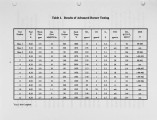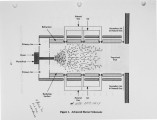| OCR Text |
Show combination of lower residence time and reaction temperature greatly retards the reaction rate, thus limiting NOx generation. Testing Methodology This section describes the sampling protocols that were used to collect samples for analysis and characterization of the burners co-firing liquid fuel with natural gas during the full scale demonstration. The streams that were sampled were liquid fuels and stack gases for both the baseline and advanced burner retrofit tests. Natural gas was not sampled or analyzed, but the flowrate was monitored to determine its proportional heat input. In addition to the sampling and analysis, the experimental design of the test is presented. Three independent types of sampling techniques were employed to measure the stack gases. Manual sampling using EPA Methods 1-4 of 40 CFR 60, Appendix A was used to collect data for determining velocities and mass emission rates. Emissions of nitrogen oxides (NOJ, carbon monoxide (CO), total hydrocarbon concentration (THC), and excess oxygen (OJ were measured with continuous emissions monitors (CEMs). A GC equipped with a flame ionization detector (FlO) was used to quantitate the ethyl benzene, and an electron capture detector (ECD) was used to quantify the nitrous oxide. All of the tests were performed at the John Zink burner test facility in Tulsa, Oklahoma. The furnace used for the testing had an insulated floor, and a water jacket around the sides to act as a heat sink. The water jacket was used to simulate the effects of the water tubes in a boiler, which would act as a heat sink, and have a negative impact on destruction efficiency. Testing of the advanced burner was also conducted with the sides of the furnace insulated to increase the furnace temperature. This condition was considered to be the most severe test for NOx emissions. 5 |
























